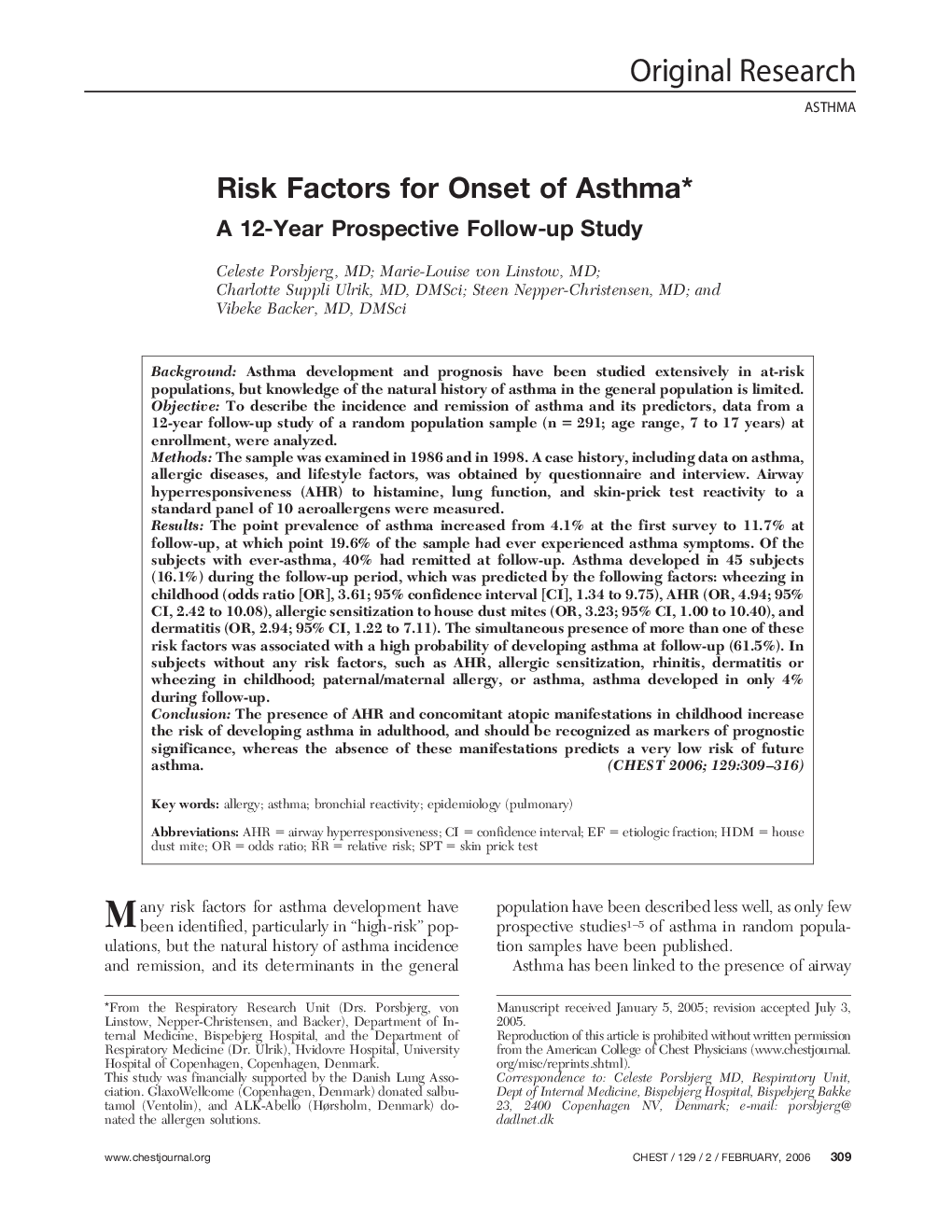| کد مقاله | کد نشریه | سال انتشار | مقاله انگلیسی | نسخه تمام متن |
|---|---|---|---|---|
| 2906151 | 1173443 | 2006 | 8 صفحه PDF | دانلود رایگان |

BackgroundAsthma development and prognosis have been studied extensively in at-risk populations, but knowledge of the natural history of asthma in the general population is limited.ObjectiveTo describe the incidence and remission of asthma and its predictors, data from a 12-year follow-up study of a random population sample (n = 291; age range, 7 to 17 years) at enrollment, were analyzed.MethodsThe sample was examined in 1986 and in 1998. A case history, including data on asthma, allergic diseases, and lifestyle factors, was obtained by questionnaire and interview. Airway hyperresponsiveness (AHR) to histamine, lung function, and skin-prick test reactivity to a standard panel of 10 aeroallergens were measured.ResultsThe point prevalence of asthma increased from 4.1% at the first survey to 11.7% at follow-up, at which point 19.6% of the sample had ever experienced asthma symptoms. Of the subjects with ever-asthma, 40% had remitted at follow-up. Asthma developed in 45 subjects (16.1%) during the follow-up period, which was predicted by the following factors: wheezing in childhood (odds ratio [OR], 3.61; 95% confidence interval [CI], 1.34 to 9.75), AHR (OR, 4.94; 95% CI, 2.42 to 10.08), allergic sensitization to house dust mites (OR, 3.23; 95% CI, 1.00 to 10.40), and dermatitis (OR, 2.94; 95% CI, 1.22 to 7.11). The simultaneous presence of more than one of these risk factors was associated with a high probability of developing asthma at follow-up (61.5%). In subjects without any risk factors, such as AHR, allergic sensitization, rhinitis, dermatitis or wheezing in childhood; paternal/maternal allergy, or asthma, asthma developed in only 4% during follow-up.ConclusionThe presence of AHR and concomitant atopic manifestations in childhood increase the risk of developing asthma in adulthood, and should be recognized as markers of prognostic significance, whereas the absence of these manifestations predicts a very low risk of future asthma.
Journal: Chest - Volume 129, Issue 2, February 2006, Pages 309–316